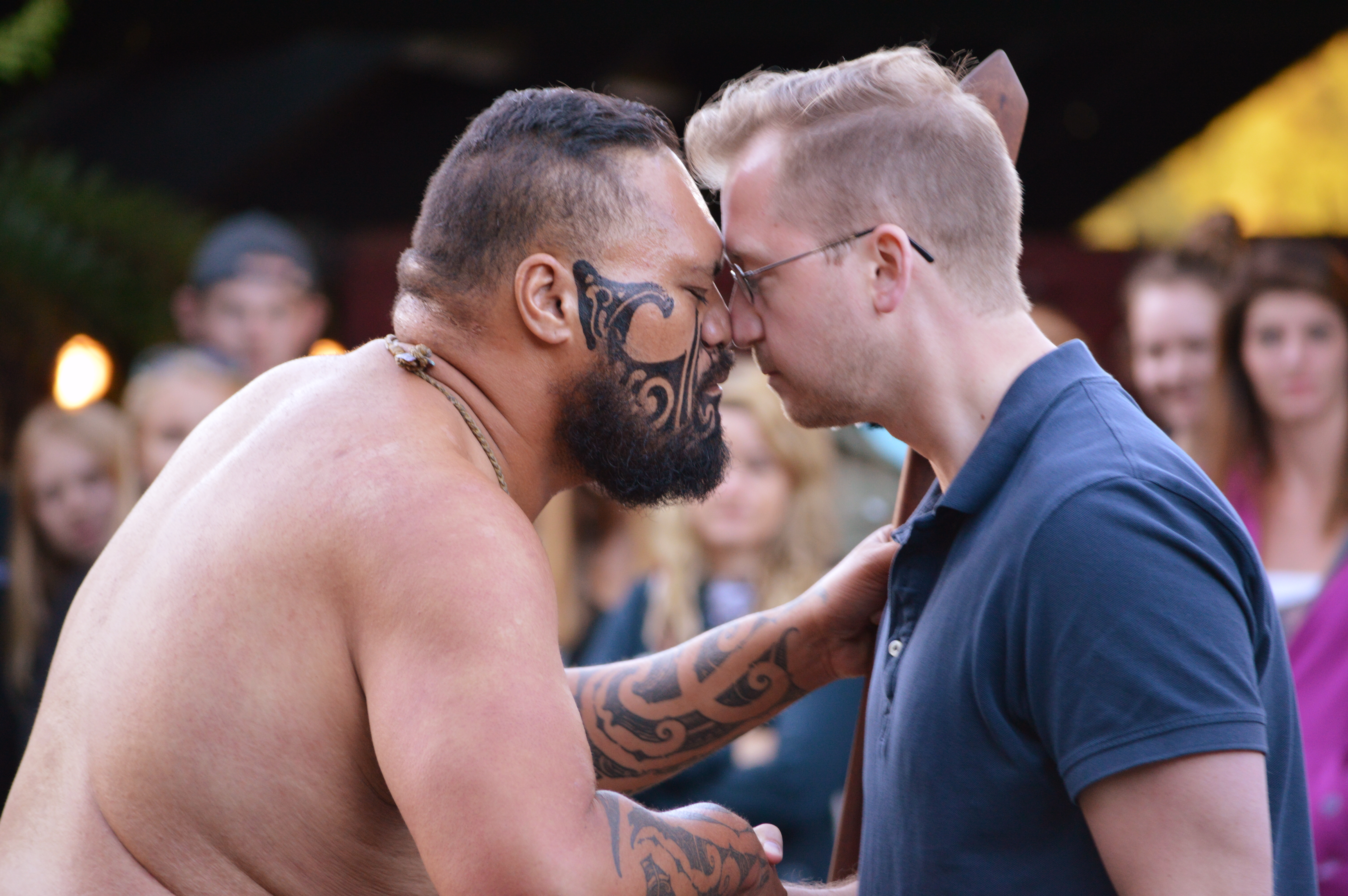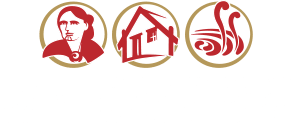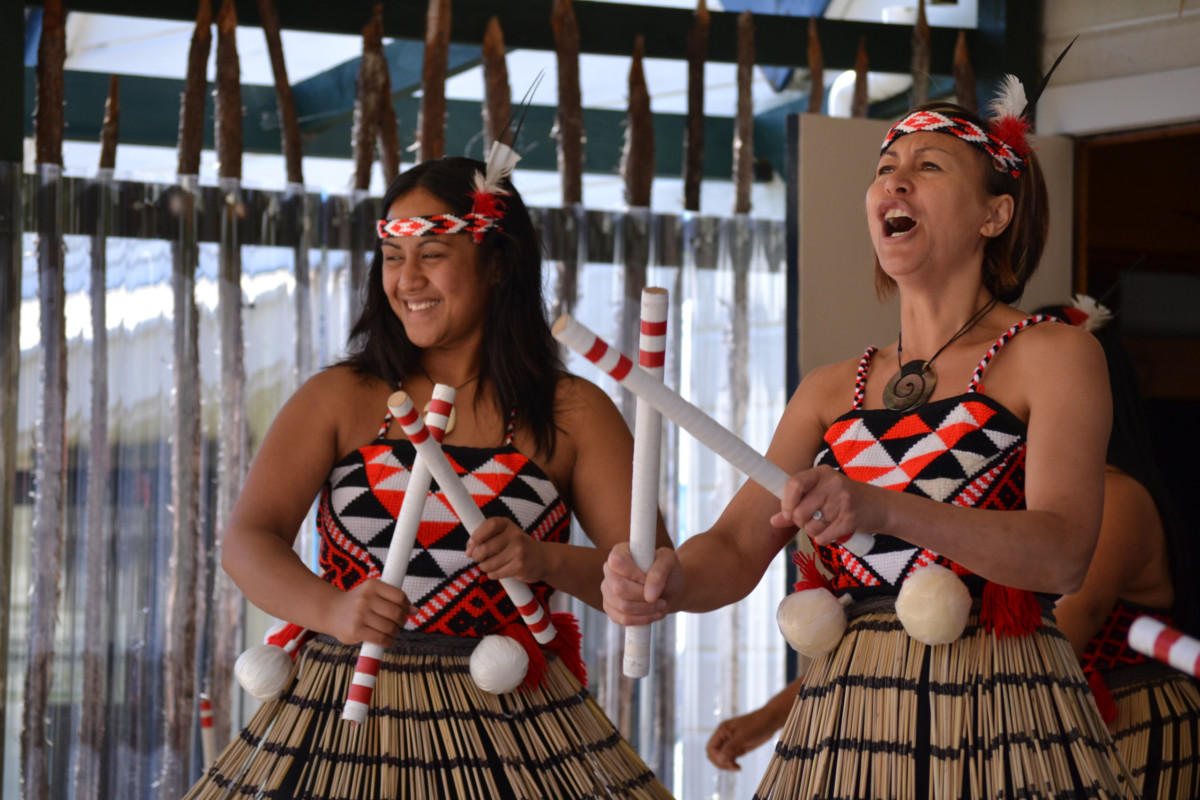For visitors discovering New Zealand, Māori traditions and customs are important to be aware of, understand and respect.
A beautiful and integral part of New Zealand’s dual heritage, these traditions shed light to the depth and influence of Māori culture in today’s society.
By learning why things are done a certain way and the reasoning behind certain protocol, you will gain a stronger sense of belonging and place while in Aoteaora – the land of the long white cloud.
Here are 10 Māori traditions to help give you a head start.
1. Shoes and hats off before entering the wharenui (meeting house), only the Chief (speaker) may keep shoes on. Entering the meeting house is a transition between the two realms. You are leaving the outside world (where Tūmatauenga the god of war resides) and entering the inside world (where Rongo-mā–Tāne the god of peace lives). The wharenui is also a structural representation of our ancestors, and as you enter, you will be able to note the backbone, arms and legs. Removing your shoes and hats before entering the sacred wharenui is a sign of respect and connects allows you to connect with your ancestors, with your bare feet and open mind
2. Ta moko are traditional Māori tattoo, often on the face. The purpose and application of moko are sacred and valued as a taonga (treasure). Facial tattoos above the eyes denote spiritual wisdom while below the eyes allude to physical achievements.
3. Karakia are traditional Māori incantations and prayers, used to invoke spiritual guidance and protection such as the blessing of a house, for safe travels, before the preparation of food. A karakia is also considered as a formal greeting when beginning a ceremony.
4. A pōwhiri is a Māori welcoming ceremony that includes speeches, dancing, singing and the hongi. It is used to welcome guests onto a marae or for other ceremonies of encounter such as the dedication of a building or welcoming new families at a school, or new colleagues at a workplace. When a pōwhiri is done, guests should stand at the waharoa (gateway or main entranceway), while the host or tangata whenua (local people of the land) stand at the wharenui (meeting house).

A pōwhiri is a welcoming ceremony full of speeches, dancing and singing
5. Before a pōwhiri can begin, a karanga (call out or summon) is heard. The first voice is a significant element of cultural protocol and unique artform that is only done by Māori women.i
6. Manuhiri (visitors) usually need to respond with by a kaikaranga (caller) to inform tangata whenua (local people of the land) who they are and where they are from, and a series of acknowledgements begins and is exchanged.
7. A speaker stands inside the wharenui (meeting house) and gives an oration. This speaker is often commenced by a man. Also remember that there is no food or drink to be taken into or consumed in the wharenui.
8. The last process of a pōwhiri is taking the visitor to the wharekai (dining room). Manuhiri (visitors) will be called in for food. It is polite to let kaumātua (elders) go first and wait until a karakia (grace) has been said before eating.
9. A traditional Māori greeting, the hongi, meaning sharing of breath, is performed by two people pressing their noses together. The greeting is used at traditional meetings and ceremonies such as a pōwhiri. It is customary for visitors to shake hands and hongi with their hosts after the speeches of welcome. The head is bent, eyes are lowered or closed, and noses are pressed together before stepping back.

The hongi is a traditional Māori greeting
10. Pounamu is considered a taonga(treasure). Pounamu taonga increase in mana (prestige) as they pass from one generation to another. The most prized taonga are those with known histories going back many generations. These are believed to have their own mana and were often given as gifts to seal important agreements.
Whakarewarewa is a great place to see these traditions and customs in action – and as New Zealand’s only living Māori village, this is as authentic as it gets.



